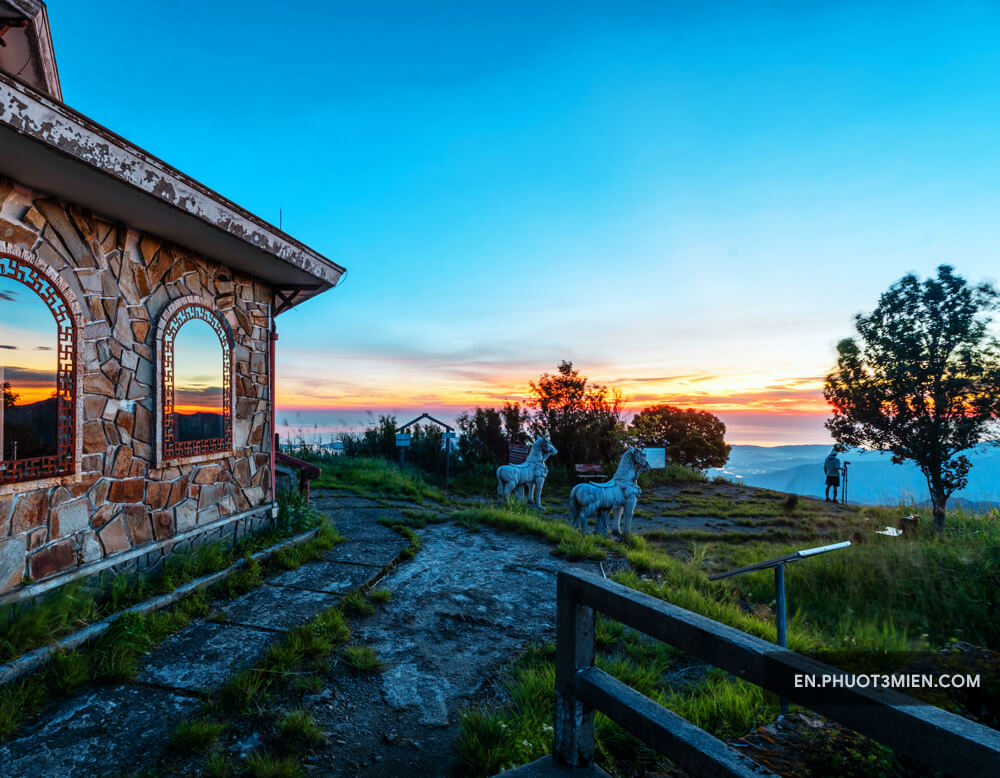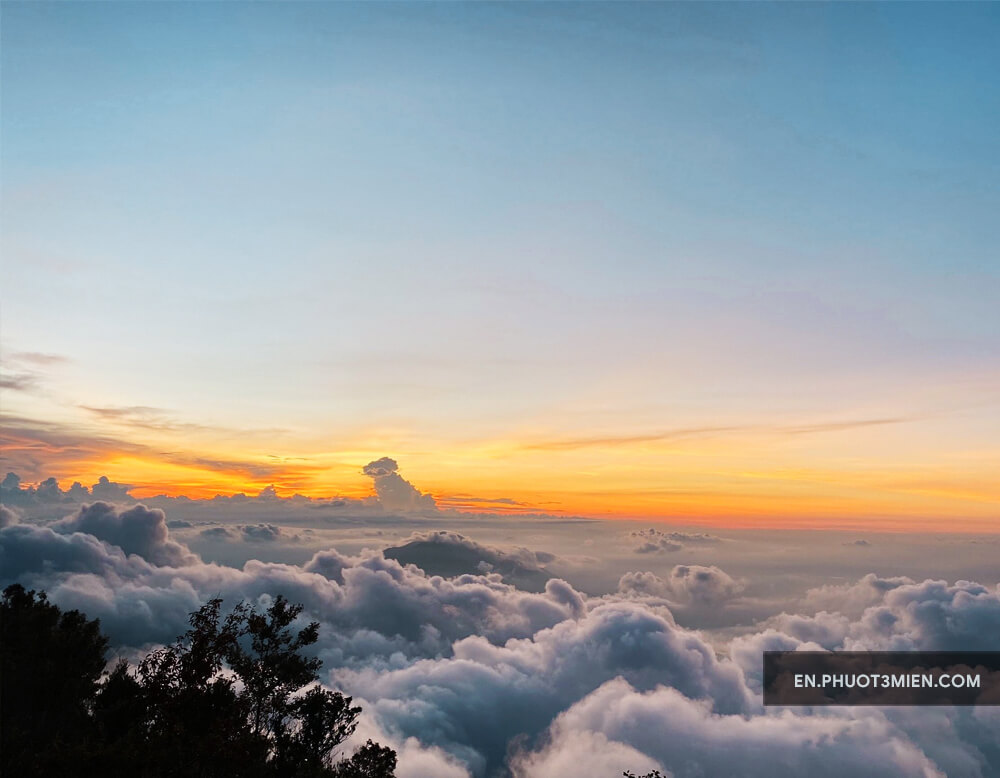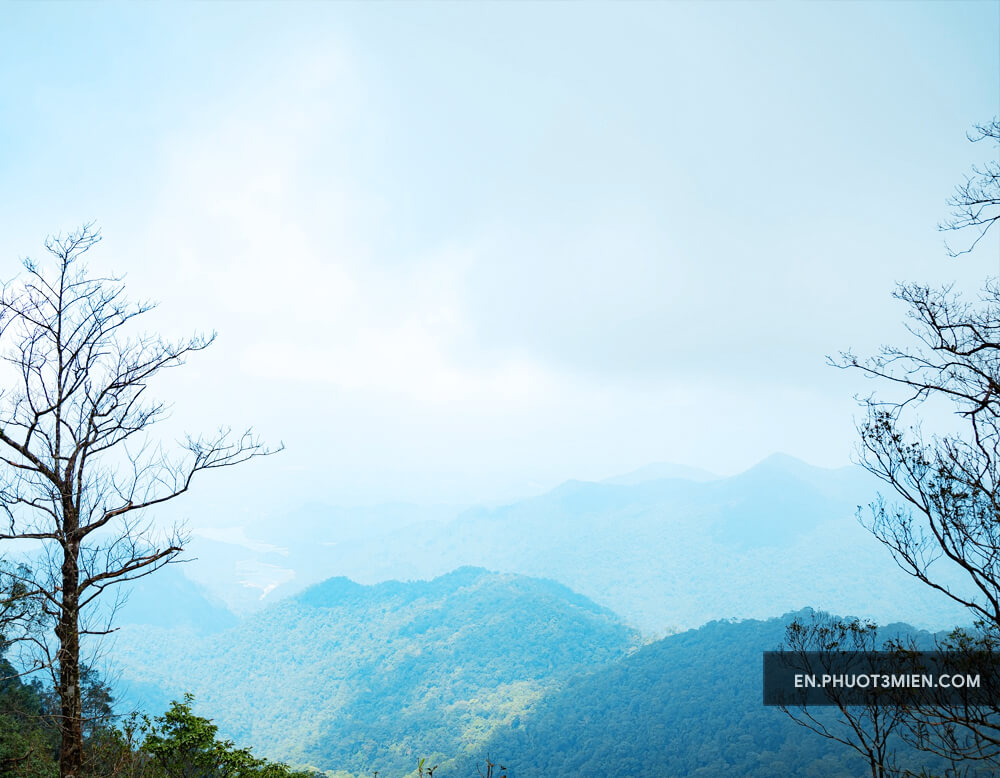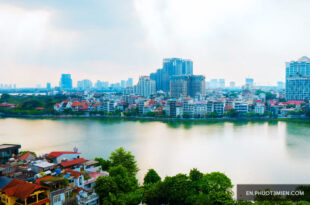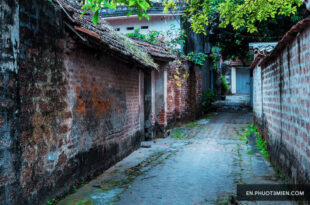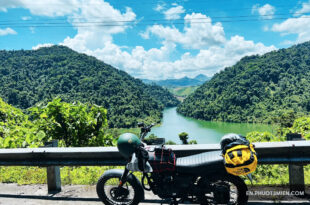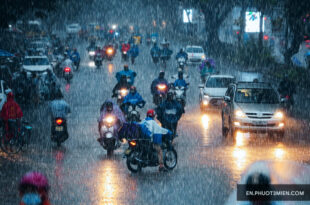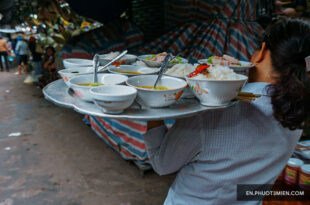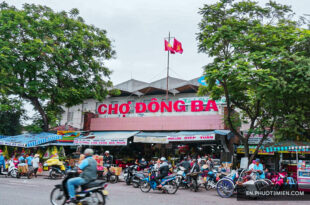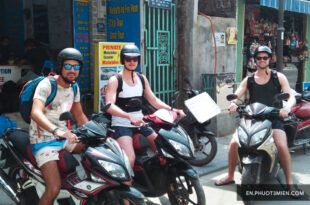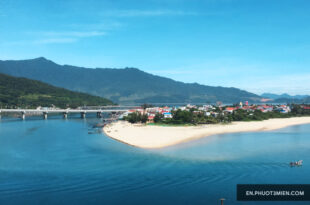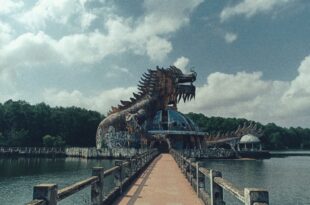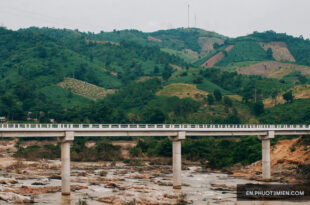About 40 kilometers to the south of Hue city, Bach Ma mountain is nestled in the Truong Son mountain range which looks like a white horse stretching its legs towards the vast sea (Bach Ma means white horse in English). Not only does this area have charming scenery, a cool climate, and French-style villas, but it is also gathers many rare and precious animals and plants of the tropics in the vast primitive forests with spectacular streams and waterfalls.
An Overview of Bach Ma National Park
Legend has it that in the old days, fairies used to ride white horses down to Bach Ma mountain to play Chinese chess. As they played, the horses became more and more engrossed in looking for grass. They became so dedicated to the grass that eventually the fairies could not wait any longer and they returned to heaven alone. The horses were bewildered and they wandered through the mountains, turning into clouds as they waited for their owners on Bach Ma mountain.
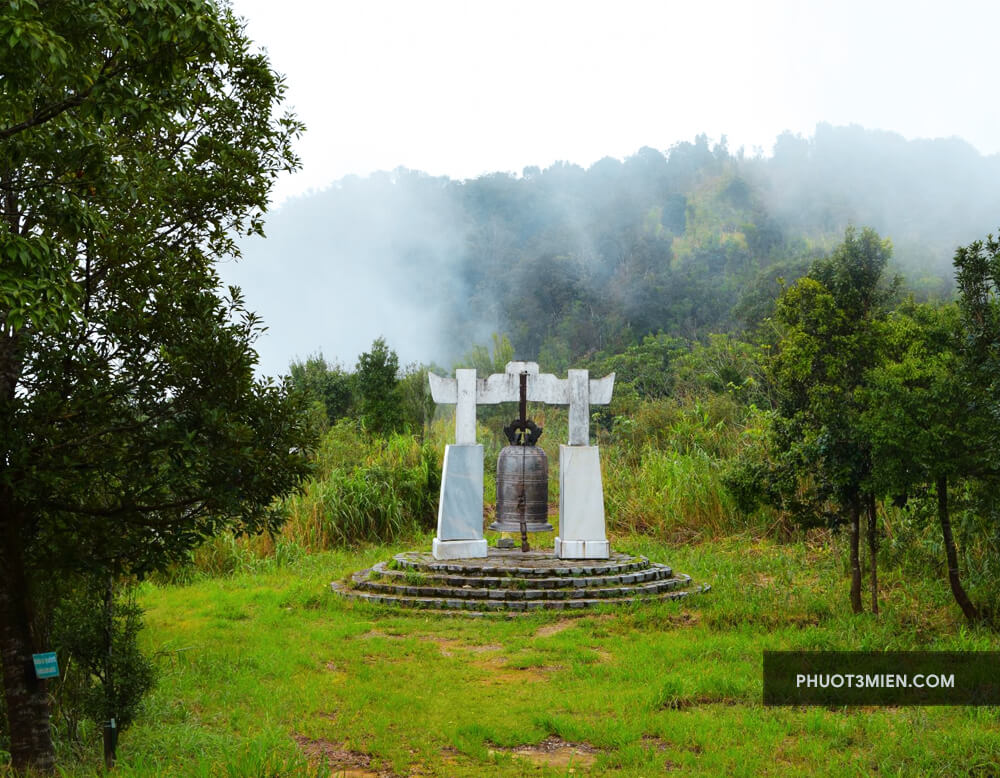
At an average height of 1,450 meters, with close proximity to the Truong Son range, and only 10 kilometers from the sea, Bach Ma is very pleasant compared to other regions of the same height throughout Indochina.
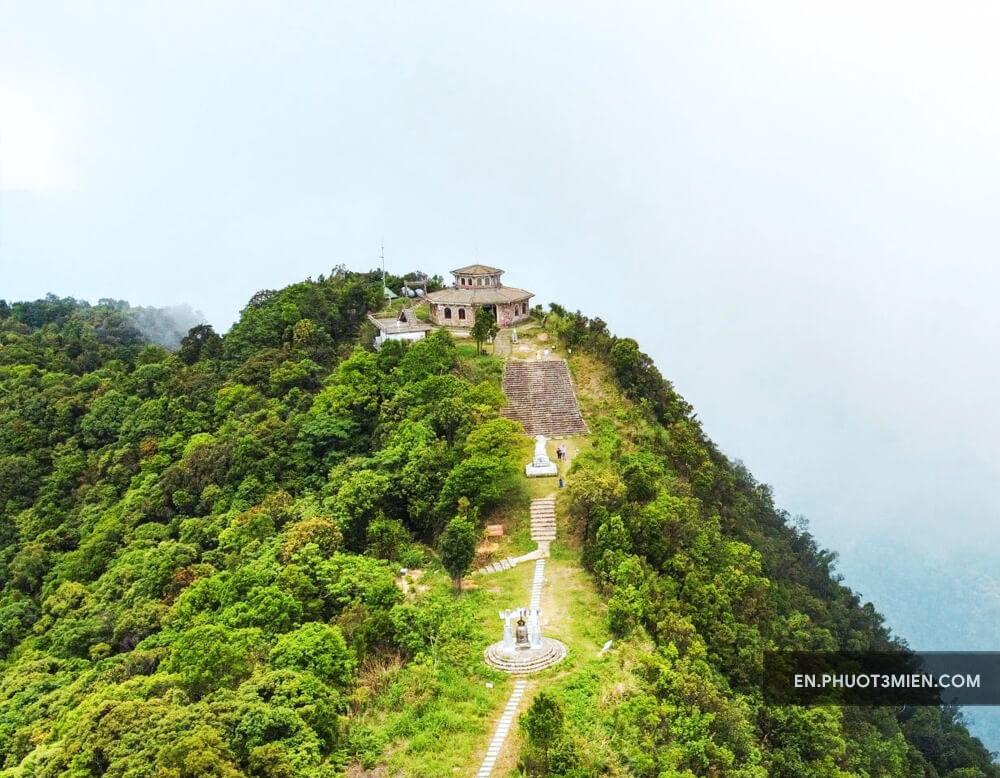
Having an area of 37,487 hectares, Bach Ma still retains quite a good amount of immense primeval forest with diverse flora (2,147 species) and fauna (more than 1,500 species), in which 93 species appear on the Vietnamese Red List and Global Red List.
How Do I Get to Bach Ma National Park?
You can travel by car or motorbike from Hue or Da Nang to reach Bach Ma National Park directly, because despite being under the administration of Thua-Thien Hue province, it’s right in the middle of Hue city and Da Nang city.
From Hue: follow National Road 1A toward Da Nang for about 40 kilometers, before going to Hai Van Tunnel, turn right onto the small road to Bach Ma National Park located right next to Cau Hai Market. Continue for about three kilometers and you will reach the main entrance to the national park.
From Da Nang: follow National Road 1A north for about 60 kilometers, over Hai Van Pass. Continue until you reach Cau Hai Market in Cau Hai Lagoon, turn left and you will see the road to Bach Ma National Park.
Motorbike and car rental services are available in most hotels and homestays in Hue and Da Nang, and you can contact your host for detailed information. To better understand how to get around Hue and Da Nang, visit these articles.
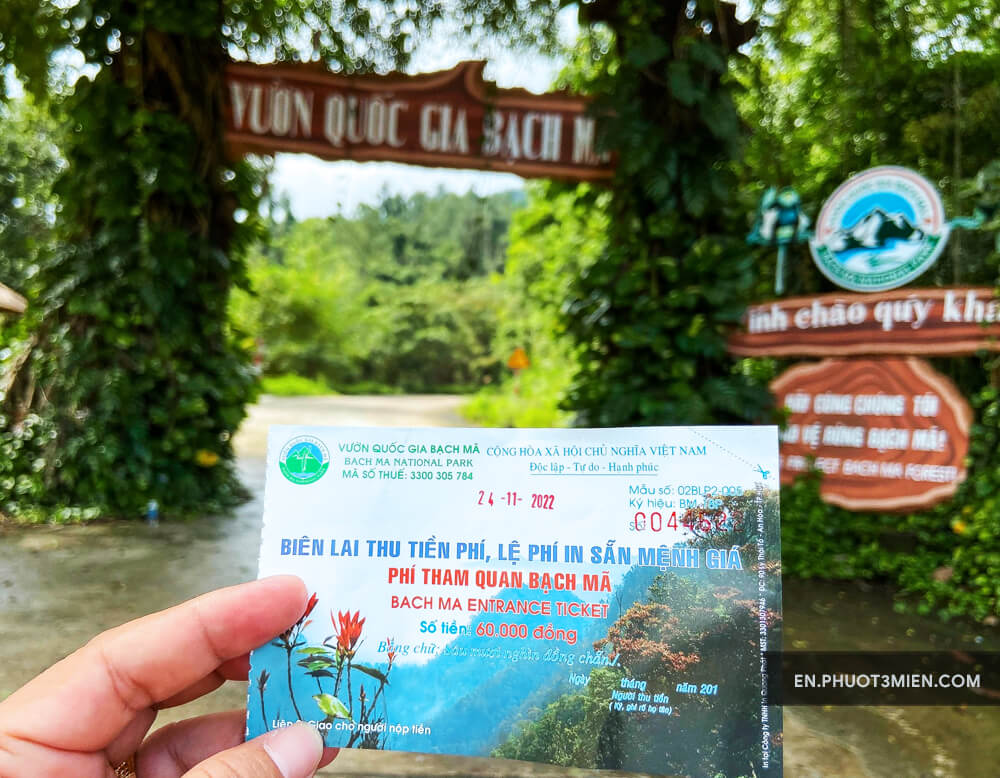
The Best Time to Visit Bach Ma National Park is from April to September, which is the dry season. You should avoid visiting during October to January, because this is the rainy and flood season.
Uncover the Hidden Charm of Bach Ma National Park
From the gate, you can hire a 16-seat bus to reach the Bach Ma peak. At the peak you will find the Vong Hai Dai (the sea observatory). Afterwards, you start your journey by climbing down through the trails to visit other beautiful locations. At the end of this article, I will provide all the pricing information!
Vong Hai Dai (The Sea Observatory)
Vong Hai Dai is located right on top of Bach Ma mountain, 1,430 meters high above sea level. This is the first place to check in when you start exploring Bach Ma National Park. In Vietnamese, Vong Hai Dai means the sea observatory, because from the Vong Hai Dai, you can observe the vast landscape from all sides, all the way to the immense ocean, especially the sea of Canh Duong (Thua Thien – Hue province) and Lang Co (Da Nang city).
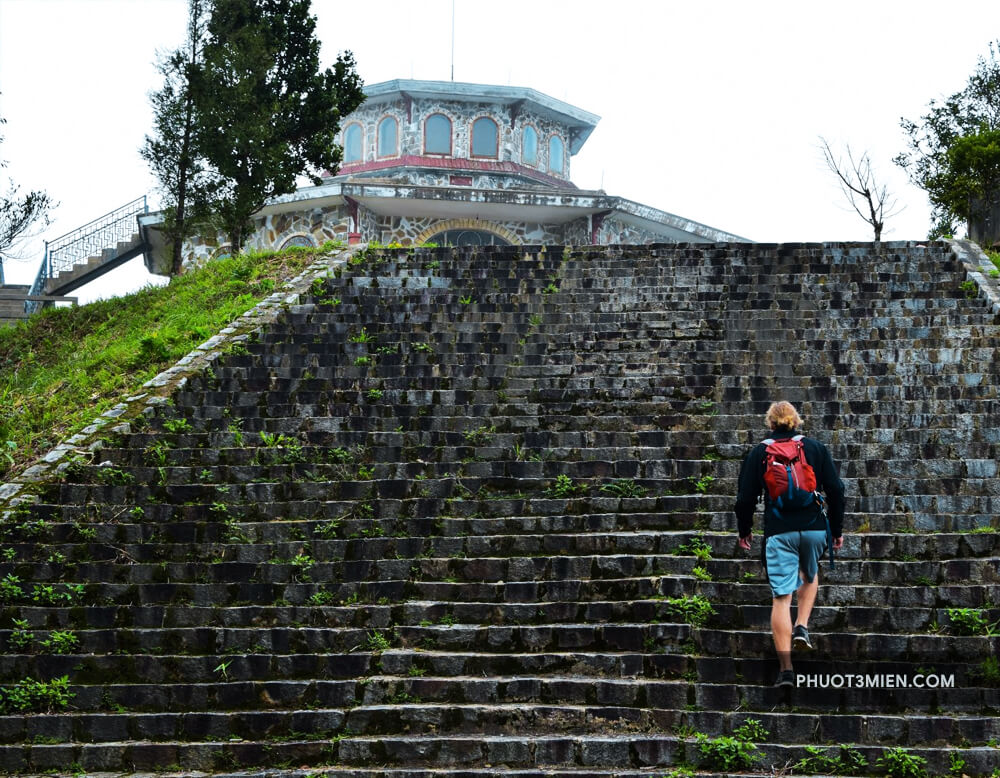
From the park gate, you must trek a distance of about 19 kilometers to reach Vong Hai Dai, which will be exhausting. Therefore, as I mentioned above, you can rent a bus to get to Vong Hai Dai to start the adventure.
If you really want to climb to Hai Dai on foot, you can hire a guide and porter to guide you and carry your gear.
KKday is a travel APP platform offering over 20,000+ online products such as: tickets for amusement parks, outdoor services, sightseeing tours, culinary experiences, transportation, accommodation, courses, and local culture... Currently, there is a summer promotion with discounts up to 50% and coupons up to 250K VND off.

Attractive discount codes such as: 100K VND off for new accounts, 150K VND off summer promotion, 250K VND off, KKday birthday celebration...
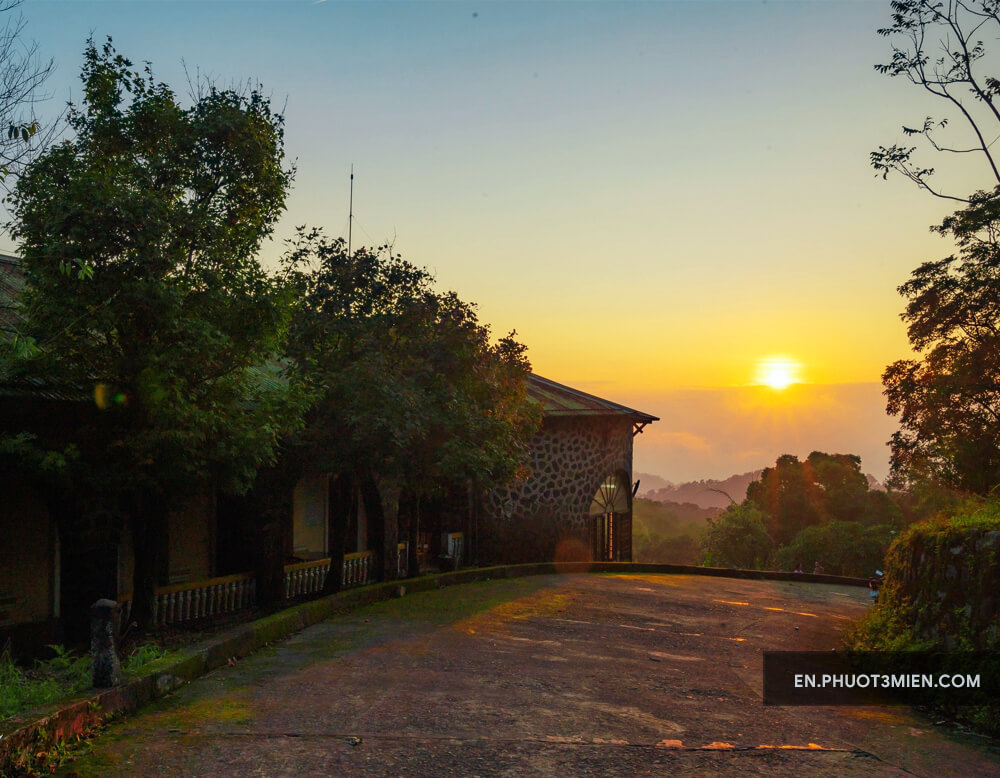
Ngu Ho (The Five Lakes)
From Hai Vong Dai, you can trek down the mountain about two kilometers to reach the Do Quyen villa (Do Quyen is the name of the villa). From there, look for the direction sign, follow the Ngu Ho trail to reach Ngu Ho (the trail is named Ngu Ho, which means it is leading to Ngu Ho, meaning the Five Lakes).
The Five Lakes is a group of five lakes located close to each other but they have differing heights. The first lake was formed by a stream that expands and bends like a luffa. The lake is a few dozen meters long, of which the stones are arranged in steps. The water here slowly flows down the mountain and is so transparent that you can see through to the bottom.
Along the stream, follow the temporary ladder made from forest trees winding together to create steps about 12 meters in length, you will descend to the second lake. This lake is only a few meters wide but long and twisted. The stone surface is smooth, black, and shiny. Some areas are patchy like an inharmonious mosaic.
The third lake has a round shape like a full moon. Water pours from a height of six meters forming a giant water curtain that is silvery white and bright under the sunlight.
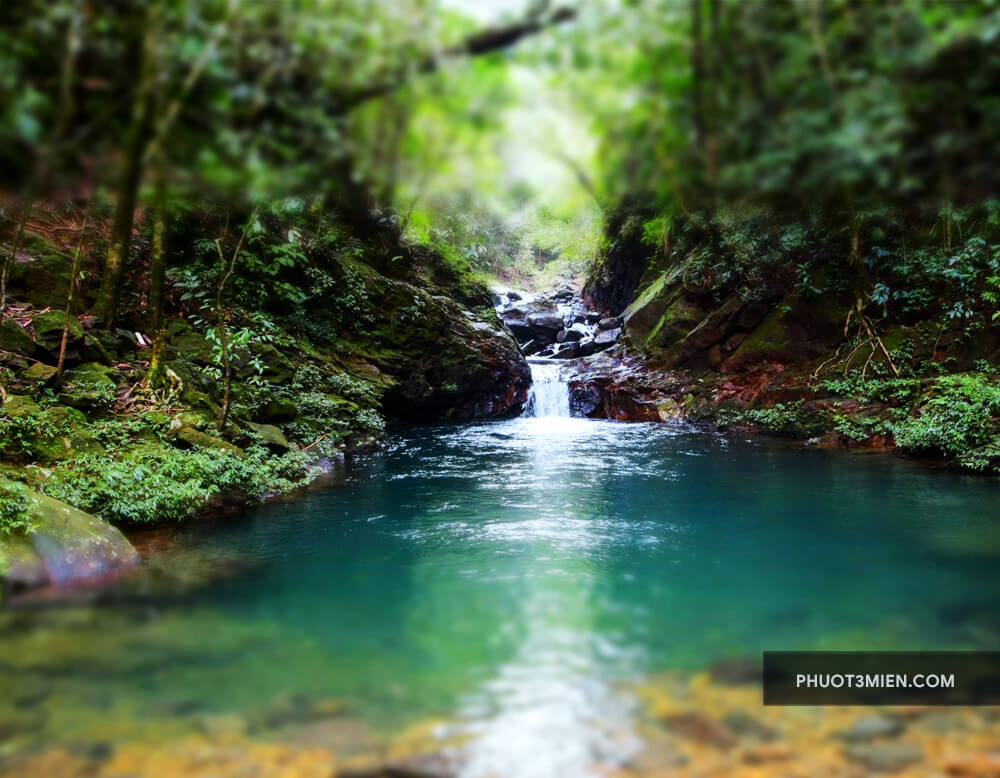
From here, continue to the fourth lake. It’s not too dangerous but you still have to stick to the stone steps along the stream. If you are not careful, you may slip or be hit by a branch. Continue for about 20 meters, you will reach the upper shore of the fourth lake. However, in order to really get down to the lake, you have to cling to the cliff, then follow the steel wire to the foot of the lake (be careful!). The water plummets from a great height, torn apart by large rocks into two. These streams pour into the lake forming two waterfalls.
Through the fourth lake, the stream continues to curl up a few dozen meters, then suddenly falls and creates the fifth lake. This is truly a masterpiece of nature, a carved product of water, stone, trees, and space. The lakeside is gray granite stone with fairly regular sizes up to two meters high. The lake is not wide. The water falls strongly flowing from the upper step to the lower step and then pours down on the lake surface.
Thac Do Quyen (Rhododendron Waterfall)
From the Five Lakes, according to the road sign, you continue on the forest path for another 45 or 50 minutes to get to the top of Do Quyen waterfall – a waterfall with a height of 300 meters and a natural masterpiece in the park. Considered as the highest waterfall in Southeast Asia, this waterfall clings to the sky like a mighty white water dragon, flying in the middle of a green forest.
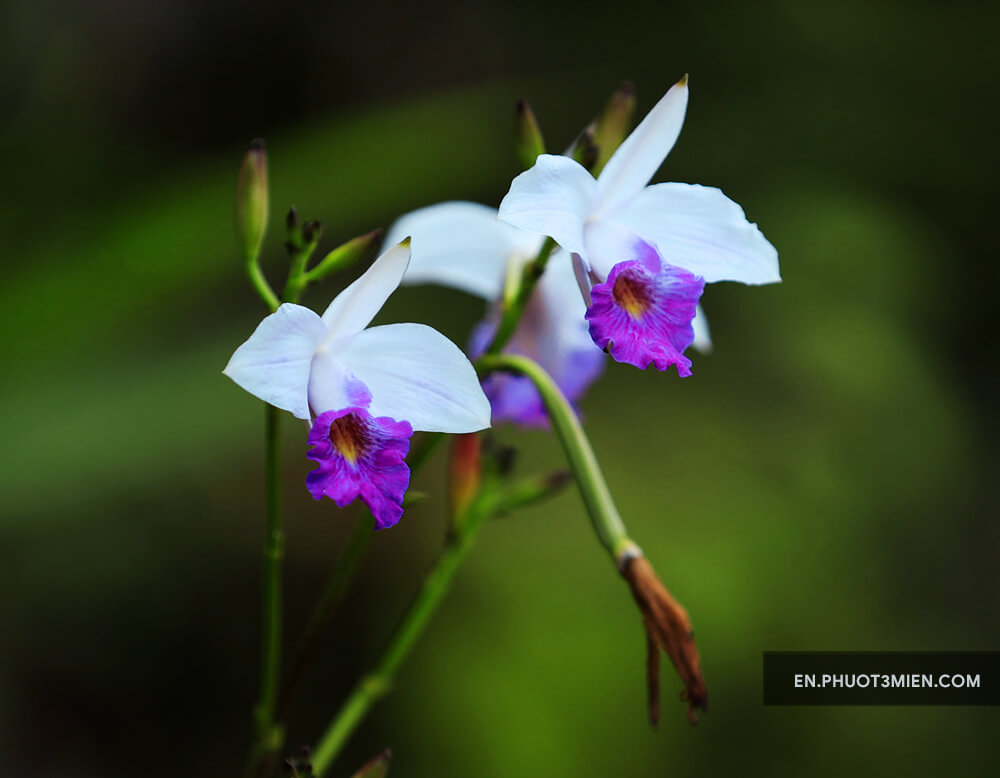
The special aspect of this waterfall is that there are many Do Quyen (rhododendron) flowers around the falls. In March or April, the rhododendrons will blossom in bright red in a noisy space of steam, adding to the beauty of this waterfall. The water rushes down from the cliff up to 250 meters high.
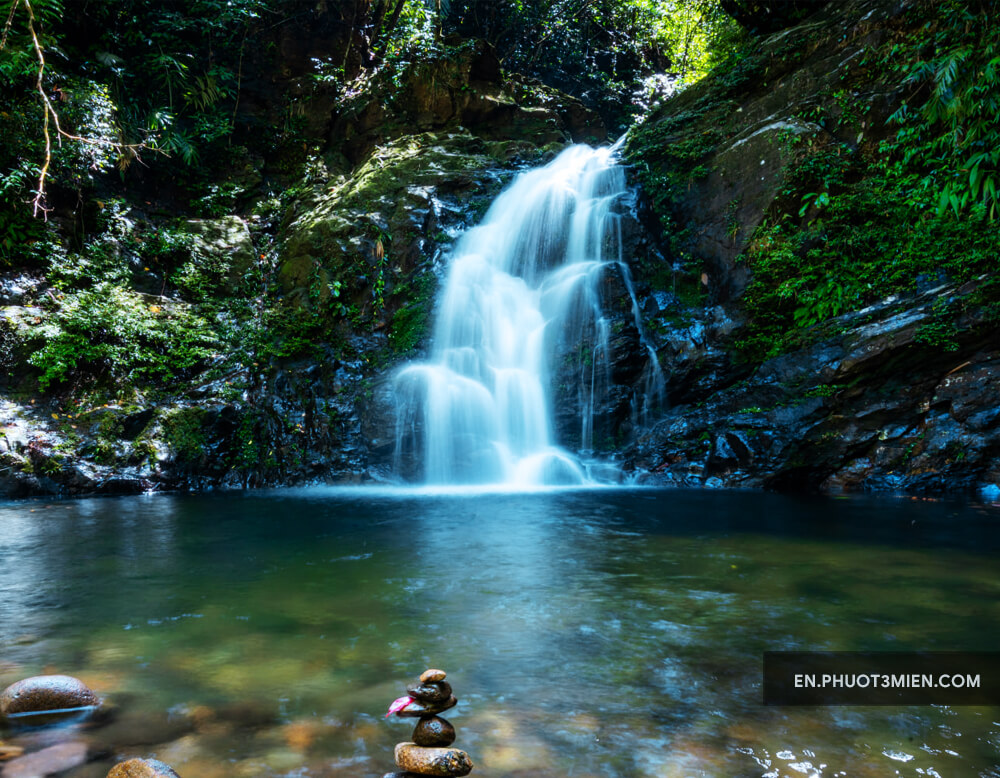
The return consists of 689 stone steps which could be a real challenge so be prepared. Go slowly, rest regularly, and take time to admire the forest trees, you will forget the fatigue and the difficulty of moving down stone steps of 30 centimeters discrepancy in height.
Truc Lam Bach Ma Zen Institute
Truc Lam Bach Ma Zen Institute is surrounded by Truoi lake, located on Linh Son mountain. It takes about 15 minutes to get across Truoi lake to reach the institute. The price of the boat across the lake is around 20,000 VND for each way. As you sit on the boat, make sure to admire the white clouds floating in the bottom of a clear blue lake. You can admire the statue of Sakyamuni Buddha meditating on a hill 24 meters high, weighing 1,500 tons in stone. Across the lake are Truc Lam Bach Ma hidden in the smoky blue of Linh Son’s peak all year round.
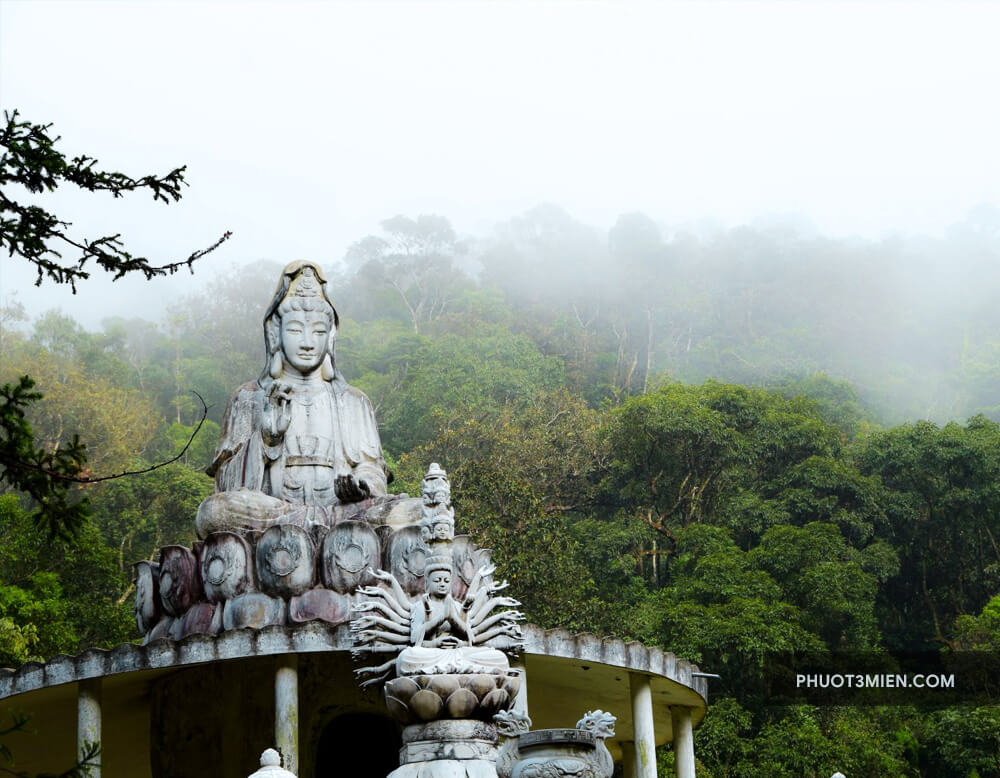
After you finish 172 steps of stone, the temple gate of the institute will appear high and majestic in the background of the blue sky and white clouds. At this time, you can observe the architecture of the Truc Lam Bach Ma built harmoniously in a complex with roads, the main hall, monk dormitory, praying house, bell tower, and relic tower. Interspersed in the forest of the Linh Son mountain are the precious flora species, beautiful and enchanting flowers tended to be the monks and nuns here.
Some information about the services
Entrance fee (at the gate):
- Children: 20,000 VND
- Adult: 60,000 VND
16-seat bus taking you from the gate to the peak of Bach Ma:
- Two-way bus: from the bus stop to the peak of Bach Ma and then it picks up guests at the Do Quyen waterfall trail to return to the entrance: 750,000 – 850,000 VND
- One way: 500,000 – 600,000 VND
Pro tip: Obviously, the more people you have, the cheaper this bus will be!
Tour guide:
- English speaking guide: 500,000 VND per day
- Porter: 300,000 VND per day
Notes When Visiting Bach Ma National Park
To get to the top of Bach Ma, there are three ways:
- Walk 19 kilometers of slopes, this is only for those who are strong enough.
- Rent a car with 16 seats to the top, one trip is around 500,000 to 850,000 VND. You can wait to join a group so you can all reduce the cost like I mentioned above.
- Buy a trekking tour to Bach Ma National Park. This way is the easiest because when you move between places, the bus will take you to the beginning of each trail via the road system. You can refer to the tour of Bach Ma National Park here: http://bachmapark.com.vn/c6/tour-du-lich.html
- Before going to Bach Ma, you should bring warm clothes and hiking shoes. Also be aware that there are leeches, so I highly recommend wearing pants, socks, and maybe even long sleeves.
- You should not expect to try rare animal meat and purchase souvenirs in Bach Ma. This is a rudimentary resort and its main attraction is its spooky splendor.
- You can be fined if you litter, plant, or break any rules when in Bach Ma.
- Read carefully and follow the signs and visiting rules.
I hope this article has given you a useful guide to visiting Bach Ma National Park. If you have visited before, we highly appreciate your comments and suggestions in the comments below! Follow our Phuot3mien Blog to get more information about traveling in Vietnam. Here are some recommended articles for you:
The Sacred Pagodas in Hue: A Spiritual Tour
Hue Festival – Celebrate Culture & History in the Ancient Capital of Vietnam
Discovering Hue: Vietnam’s Imperial City and UNESCO World Heritage Site
